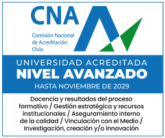Hector Jorquera(a), Francisco Barraza(b), Johanna Heyer(c), Gonzalo Valdivia(d), Luis N. Schiappacasse(e), Lupita D. Montoya(f).
(a) Departamento de Ingeniería Química y Bioprocesos, Pontificia Universidad Católica de Chile, Avda. Vicuña Mackenna 4860, Santiago, 7820436, Chile.
(b) Instituto de Geografía, Pontificia Universidad Católica de Chile, Avda. Vicuña Mackenna 4860, Santiago, 7820436, Chile.
(c) Departamento de Ingeniería Química y Bioprocesos, Pontificia Universidad Católica de Chile, Avda. Vicuña Mackenna 4860, Santiago, 7820436, Chile.
(d) Departamento de Salud Pública, Pontificia Universidad Católica de Chile, Marcoleta 340, Santiago, 8330033, Chile.
(e) Núcleo de Energías Renovables, Universidad Católica de Temuco, Chile.
(f) Civil, Architectural and Environmental Engineering Department, University of Colorado Boulder, UCB 428, Boulder, CO, USA.
ENVIRONMENTAL POLLUTION
Volumen: 236 Páginas: 477-487.
DOI: https://doi.org/10.1016/j.envpol.2018.01.085
Fecha de Publicación: 07 de Marzo de 2018
Abstract
Temuco is a mid-size city representative of severe wood smoke pollution in southern Chile; however, little is known about the indoor air quality in this region. A field measurement campaign at 63 households in the Temuco urban area was conducted in winter 2014 and is reported here. In this study, indoor and outdoor (24-hr) PM2.5 and its elemental composition were measured and compared. Infiltration parameters and outdoor/indoor contributions to indoor PM2.5 were also determined. A statistical evaluation of how various air quality interventions and household features influence indoor PM2.5 was also performed. This study determined median indoor and outdoor PM2.5 concentrations of 44.4 and 41.8 μg/m3, respectively. An average infiltration factor (0.62 ± 0.06) was estimated using sulfur as a tracer species. Using a simple mass balance approach, median indoor and outdoor contributions to indoor PM2.5 concentrations were then estimated as 12.5 and 26.5 μg/m3, respectively; therefore, 68% of indoor PM2.5 comes from outdoor infiltration. This high percentage is due to high outdoor pollution and relatively high household air exchange rates (median: 1.06 h-1). This study found that S, Br and Rb were dominated by outdoor contributions, while Si, Ca, Ti, Fe and As originated from indoor sources. Using continuous indoor and outdoor PM2.5 measurements, a median indoor source strength of 75 μg PM2.5/min was estimated for the diurnal period, similar to literature results. For the evening period, the median estimate rose to 135 μg PM2.5/min, reflecting a more intense wood burning associated to cooking and space heating at night. Statistical test results (at the 90% confidence level) support the ongoing woodstove replacement program (reducing emissions) and household weatherization subsidies (reducing heating demand) for improving indoor air quality in southern Chile, and suggest that a cookstove improvement program might be helpful as well.



